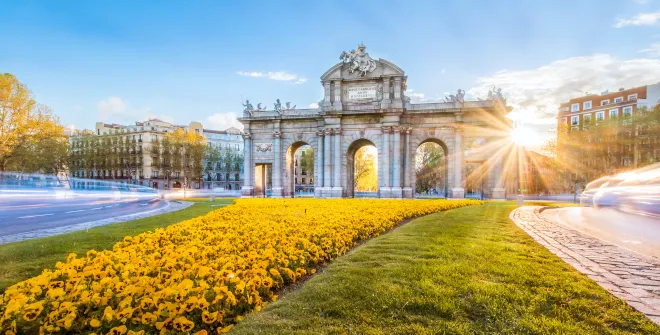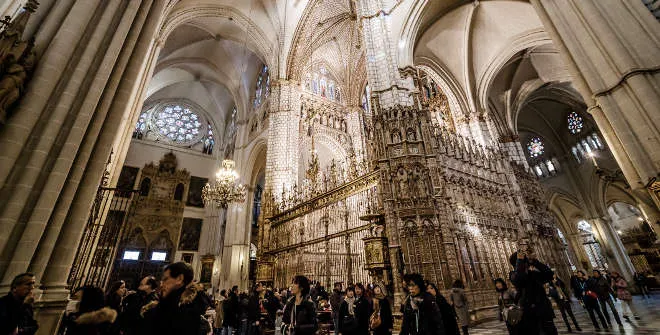Royal Residence of San Lorenzo de El Escorial
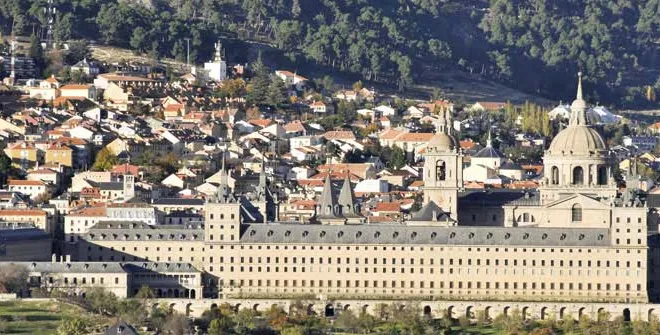
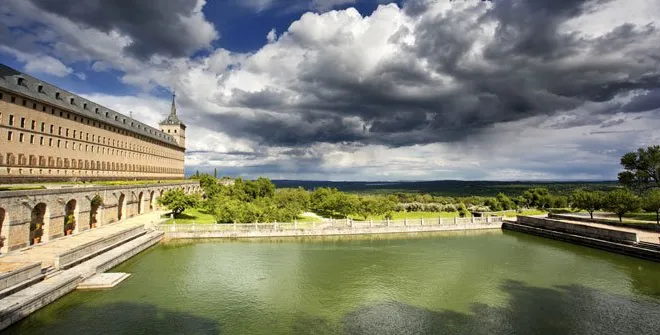
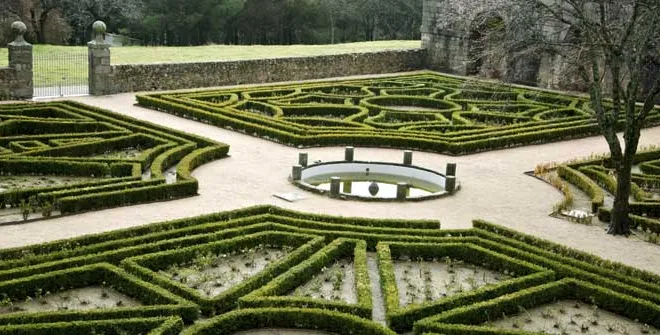
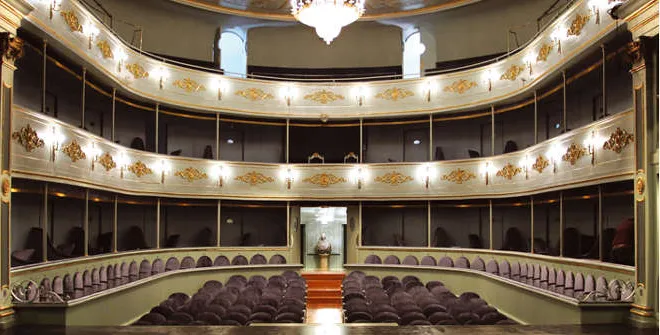
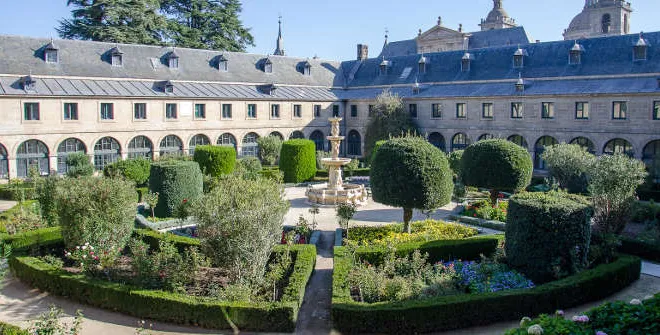
Located in the heart of the Sierra de Guadarrama mountain range (on one side of Mount Abantos), just 50 kilometres from Madrid, San Lorenzo de El Escorial is one of the main towns for cultural tourism in the area. Its principal attraction is the Monastery and Royal Residence of San Lorenzo de El Escorial, which was declared a UNESCO World Heritage Site in 1984.
Deeply affected by the death of his father, Charles V, in 1558 and in order to consolidate the House of Habsburg in Spain, Philip II ordered the construction of the monastery. His aims were to ensure that his family would be remembered forever, to create a dynastic place of burial, and to offset the destruction of a church dedicated to St. Lawrence during the Battle of St. Quentin in France.
On 23 April 1563, the first stone was laid by order of Juan Bautista de Toledo, and after his death in 1567, Juan de Herrera took over the project. He gave it his own Herrerian-style architectural look and feel, characterised by the use of lines rather than overusing decorative elements that only distract attention from the building itself.
With its 207-metre building front facing towards Mount Abantos, the rectangular structure measures 33,000 square metres and is designed in the shape of an inverted grid. Visitors are greeted by the imposing main façade leading to the Patio de los Reyes, a courtyard that takes its name from the statues of the Kings of Judah which decorate the front of the basilica.
This is undoubtedly a must-see for any visit to the monastery. The basilica’s square floor plan is crowned by a dome inspired by Saint Peter’s in the Vatican, and has a total of 43 altars and chapels. The Royal Oratories and the Royal Burials sculptures are particularly noteworthy, these two groups of kneeling statues depict the families of Charles V and Philip II. Under the basilica’s royal chapel lie the Royal Vaults; 26 black marble tombs containing the remains of the Kings and Queen Consorts (who were mothers to kings) of the Houses of Hapsburg and Bourbon, and the Princes and Princesses’ Vault, the resting place of the infantes and infantas, as well as the Queen Consorts who died without heirs to the throne.
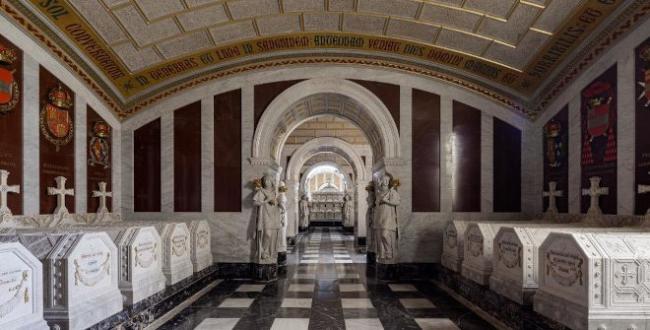
The Palace of the Hapsburgs, located behind the basilica’s high altar, boasts an interesting Battle Room which contains frescoes of some of the more significant battles won by the Spanish crown. Felipe II and Princess Isabel Clara Eugenia’s rooms can be found nearby.
To visit the Architecture Museum, you’ll need to head to the vaults in basement area of the monastery. It features copies of the building’s architectural plans, the tools used for its construction and the budget, in addition to an art gallery containing works by El Greco, Zurbarán, Ribera, Tintoretto, Titian, Rubens and Veronese. No visit would be complete without a trip to the library, which, among its impressive collection, contains a copy of the Cantigas de Santa María by Alfonso X the Wise, several works by Teresa of Ávila, Mozarabic manuscripts, and the Golden Gospels of Henry III, written in gold.
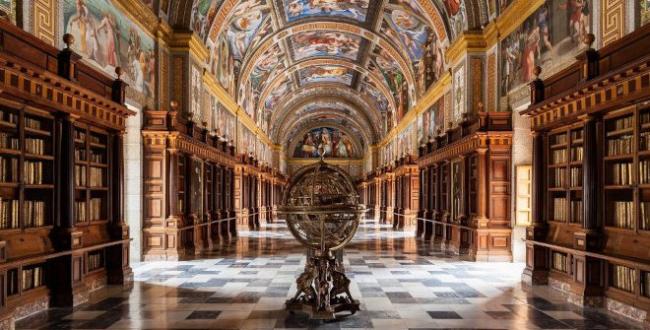
Although traces of previous inhabitants remain, the origins of the town of San Lorenzo de El Escorial date back to the 11th century Reconquesta, and the subsequent resettling of the central plateau in the 12th century. This small agricultural and cattle farming village was isolated for centuries until in 1561, with the founding of the Royal Court in Madrid, Philip II commissioned the construction of the Monastery of San Lorenzo de El Escorial on land that he had recently purchased.
With the arrival of workers coming to build the monastery, the remote village was transformed into a town, which brought about the presence of traders and craftsmen, a rise in population, as well as the construction of a new town hall, a hospital and residences for aristocrats that came to live near the king. Two centuries later, Charles III gave the royal stamp of approval to the new town and its architectural design, courtesy of Juan de Esteban and Juan de Villanueva.
At the beginning of the 19th century, with the French invasion of 1808, the Royal Family abandoned El Escorial as their official residence, and the town entered a period of decline. However, it recovered some of its commercial and cultural activity in the middle of the century, as a result of the building of a new railway network and the sale of Crown lands. This allowed the emerging bourgeoisie to purchase land on which to build hotels and summer residences.
Alfonso XIII transformed the town into the nerve centre of the Eastern part of the province. Ever since, El Escorial has been one of the region's most important hubs for education, with the founding of María Cristina University, a private college known today as Real Centro Universitario El Escorial-María Cristina which is part of Complutense University of Madrid, as well as the Colegio Inmaculada Concepción and the Hermanas Carmelitas de la Caridad schools. Today, El Escorial is a leading figure in the world of university education, and since 1988, it has organised its prestigious Cursos de Verano, or, Summer Courses, which are attended by thousands of Spanish and international students every year.
Next to the monastery, it’s worth visiting the Casa de Oficios and the Casa de Infantes. They’re located between the monastery's façade and Calle Floridablanca, and although they’re separate to the main building itself, they’re still very much linked to it. Also noteworthy are the King's Stables, which were built to keep the horses and carriages used by the Royal Family on their visits.
Other highlights in the area include the Casita del Príncipe, built by Juan de Villanueva for the Prince of Asturias—the future King Charles IV—and the Casita del Infante, which was built for the brother of the future king. The latter consisted of a small hunting pavilion in natural surroundings, which served as a setting for chamber recitals and meetings of the court.
The Royal Coliseum of Carlos III Theatre, which was designed by French architect Jaime Marquet, is another of the town's significant buildings, and is currently one of the region’s most important cultural centres.
Moving away from El Escorial’s historic centre, the Chapel of the Virgen de Gracia can be found in the area of La Herrería. Surrounded by pine trees, this small building is the location of a popular annual pilgrimage. Nearby, and built into a rock, lies the Seat of Philip II, from which it is said that the monarch supervised the construction of the monastery.
In the heart of the Sierra de Guadarrama mountain range, a mere 8 kilometres from the town, is the Benedictine Abbey of Santa Cruz in the Valle de Cuelgamuros (formerly known as the Valley of the Fallen). This huge construction stands on an area of 36,000 square metres and comprises of the abbey, as well as other buildings such as the library, the inn, a crypt carved into the rock, and an immense 150-metre-high cross which can be accessed via a hidden funicular. The crypt holds the tomb of José Antonio Primo de Rivera and, concealed from the public, the graves of 40,000 soldiers who died in the Civil War. Until 2019, the site also housed the tomb of Francisco Franco, whose remains were exhumed and transferred to the Mingorrubio Cemetery in El Pardo.
As far as gastronomy is concerned, try the restaurant Montia, where you’ll find signature cuisine based on home-grown products by Daniel Ochoa. Valhalla Experience by Héctor Checa is another option. Here, the chef’s authentic offering will leave you feeling satisfied! What’s more, the natural richness of the surrounding area has given rise to the popular Sierra de Guadarrama meat, which you’ll see featured in many of the dishes at nearby restaurants.
- By Car: 45 minutes via the A-6, the AP-6 and the M-600
- By Coach: 50 minutes from Moncloa Bus Station.
- By Train: 60 minutes by Cercanías suburban train from Atocha Station, or 45 minutes from Madrid - Chamartín - Clara Campoamor Station. A fun alternative is the Philip II train made up of 1940s carriages hauled by a train engine from the 1960s.
For further information: National Heritage - Royal Site of San Lorenzo de El Escorial
OTHER TRAIN EXCURSIONS
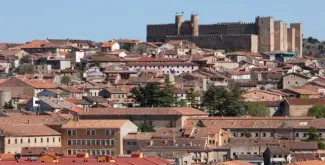
Medieval Train to Sigüenza
A wonderful and unique way of visiting a town steeped in history: 7 & 21 May, 4 & 16 June, 22 Sept, 1, 15 & 29 Oct 2022
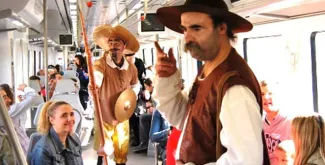
Cervantes Train
A unique way of travelling to and discovering Alcalá de Henares, the birthplace of Miguel de Cervantes. Starting on 16 April!
